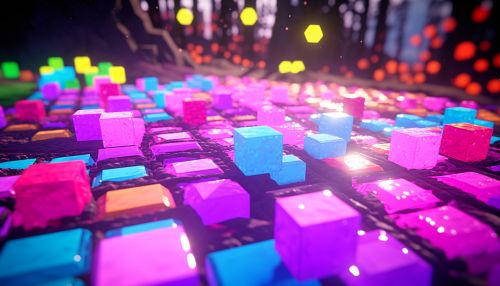Pixol
Overview
Pixol, short for "Pixel and Voxel", is a term coined by the creators of the software ZBrush. It represents a unique blend of 2D and 3D data. Unlike a traditional pixel, which only holds information about color and opacity, a Pixol contains additional information on depth (Z), material, and lighting information. This allows for the creation of images with significant depth and texture, which can be manipulated in real-time.
History
The concept of Pixol was first introduced in the late 1990s by Pixologic, the company behind ZBrush. The founders of Pixologic, Ofer Alon and Jack Rimokh, were seeking a way to bridge the gap between 2D and 3D graphics. The result was the Pixol, a pixel with additional properties that could be manipulated in three dimensions.
Technical Details
A Pixol is essentially a data structure that holds more information than a traditional pixel. In addition to color and opacity, a Pixol also stores information about depth, material, and lighting. This additional information allows for a greater degree of manipulation and control over the final image.
Depth
The depth information in a Pixol is represented by a Z value, which corresponds to the third dimension in a 3D space. This Z value allows for the creation of images with a sense of depth and volume, as each Pixol can be positioned in three-dimensional space.
Material
The material information in a Pixol defines the surface properties of the Pixol, such as its reflectivity, transparency, and texture. This allows for a high degree of control over the appearance of the final image, as each Pixol can have its own unique material properties.
Lighting
The lighting information in a Pixol defines how the Pixol interacts with light. This includes information on how the Pixol reflects and absorbs light, as well as how it casts shadows. This allows for the creation of images with a realistic sense of lighting and shadow.
Applications
The unique properties of Pixols make them particularly well-suited for a variety of applications in digital art and computer graphics.
Digital Sculpting
In digital sculpting, artists use tools like ZBrush to manipulate Pixols in three dimensions, creating detailed and lifelike models. The ability to manipulate each Pixol's depth, material, and lighting properties allows for a high degree of control over the final appearance of the model.
Texture Painting
Pixols are also used in texture painting, where they allow for the creation of detailed and realistic textures. The material and lighting properties of each Pixol can be manipulated to create a wide range of effects, from the subtle texture of skin to the rough surface of stone.
Illustration
In illustration, Pixols can be used to create images with a unique blend of 2D and 3D elements. The depth information in each Pixol allows for the creation of images with a sense of volume and depth, while the material and lighting properties allow for a high degree of control over the final appearance of the image.
See Also


